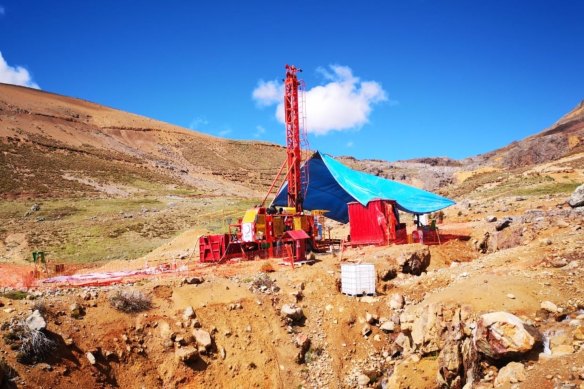
EV Resources says the “exceptional” molybdenum grades recorded at its Parag project in Peru will make a significant contribution to the operation’s economics as a key by-product of potential copper production.
The company recently wrapped up a comprehensive review of molybdenum grades recorded in both previous and a freshly-completed drill campaign, with impressive results including up to 0.62 per cent molybdenum.

EV Resources has recorded positive molybdenum results from drilling at its Parag project in Peru.
Management says its latest results have led to a re-evaluation of its exploration strategy, with a new focus on molybdenum as a by-product. It adds that prices for the metal have climbed to US$21.89 (AU$32.99) per pound or US$48,259 (AU$72,733.5) per tonne.
Following analysis of historic data from 76 holes covering 18,170m, EV Resources returned the peak grade within an 89.4m hit from just 6.5m that also returned 0.39 per copper. A second historic hole also delivered positive results, with a 72m section going 0.26 per cent copper and 0.36 per cent molybdenum from surface.
“Parag is well positioned with its copper-molybdenum potential to accelerate towards a maiden resource and feasibility studies.”
EV Resources managing director Hugh Callaghan
The company decided to acquire Parag based on the project’s historic drilling and its alluring molybdenum by-product grades. Management says its near-surface molybdenum grades at Parag are comparable to the highest-grade pure molybdenum mines in the world, including the Henderson and Climax mines operated by major copper producer Freeport McMoran in Colorado.
EV Resources managing director Hugh Callaghan said: “With each hole drilled, and as prices rise, we are more excited about the project. We are also acutely aware that the future of the copper industry depends on by-product contributions to supplement the steady decline in grades of copper. Parag is well positioned with its copper-molybdenum potential to accelerate towards a maiden resource and feasibility studies.”
The company also completed a 7-hole campaign at the site earlier this year, with assays from its first four holes delivering consistent grades from near surface. Highlights from a 1980m program show a 348m intercept at 0.4 per cent copper and 0.2 per cent molybdenum from just 3.2m including an impressive 24m hit grading 0.81 per cent copper and 0.43 per cent molybdenum.
A second hole returned a 258m section going 0.4 per cent copper and 0.14 per cent molybdenum from only 1m including 58m reading a solid 0.9 per cent copper and 0.3 per cent molybdenum from 23m. The assays revealed incredibly consistent molybdenum results across a 130m hit at 0.3 per cent from just 1m.



























